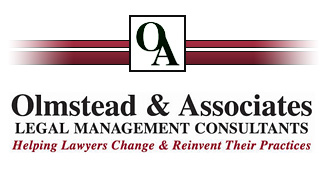Year End Client Satisfaction SurveysOut-Think and Out-Service Your Competitors
by John W. Olmstead, Jr., MBA
Copyright 1996-97 by Olmstead & Associates. All Rights Reserved.
The 90’s are being called the decade of the client. Clients are demanding and getting – both world class service – and top quality products. Most firms have spent too much money developing new clients and not enough retaining old ones. For most law firms, obtaining new work from existing clients is the most productive type of marketing.
Therefore, more firms are developing and using client surveys to obtain feedback about their clientís satisfaction or dissatisfaction with the attorneys and staff who served them, the timeliness, responsiveness, and value of work performed, the need for additional services, the need for greater lawyer specialization and whether they would use the firm again and refer the firm to friends and associates.
Information obtained from client surveys may be the most important marketing activity a law firm can undertake. Most firms indicate client surveys have found their clients to be impressed that the firm cares about their opinions. It is good business to listen to your clients. Understanding what bugs people about your offerings and those of your competition can be the most valuable input to strategy development you can get your hands on. Find out what bugs your clients and you will learn to out-think and out-service your competitors.
One good method for listening to your clients is the client satisfaction survey conducted via a mailed questionnaire. Many firms find that such a survey conducted at the end of year to be an excellent vehicle for collecting client feedback.
Client Selection
While one option would be to survey all of your clients, many firms choose to pull a list of files closed during the year and survey only those clients. This keeps the size of the survey manageable.
Questionnaire Design – Sample Questionnaire
A sample questionnaire that can be used is attached to this writing. In general the design should be simple in layout, easy to read, and no longer than one page – front and back. You may want to color code the questionnaires for various areas of law categories and client types. Questions should be easy to answer and structured. Yes/No, true/false, and multiple choice answers work best. Some fill in the blank type questions will be needed. As you formulate your questions try to think from the clientís perspective. To learn what clients want, you must ask specific questions. A good questionnaire should seek the answers to two key concerns:
- How are we doing?
- How can we get better?
Sample Cover Letter (ON FIRM LETTERHEAD)
Dear (NAME OF CLIENT)
|
Mailing Procedure
The questionnaire should be mailed with a good cover letter and a stamped return envelope. We suggest that it be sent first class and in plenty of time to arrive ahead of the Xmas rush. While labels can be used we suggest that the envelope be typed instead. This presents a more professional appearance and is more likely to be opened and responded to by the client.
Compilation
Once the surveys are returned to the firm a return rate (Percentage) should be calculated.Then the surveys should be summarized in some form and expressed in a summary document so that key points can be spotted. Often mathematical summaries such as averages, percentages, totals, etc. are used. Summary documents may also include graphs, charts, etc.
Action Items
The information you get from these surveys can be used in a variety of ways. You can use it, for example, to correct specific performance deficiencies, to increase client satisfaction, to help avoid potential malpractice claims and to stop a client passing on a poor-service complaint to other potential clients. The important thing here is to extract strategic action items and develop specific action items upon which the firm will commit time and resources.
Follow-up
A client satisfaction survey program will not succeed unless a follow-up plan is formulated. Specific task assignments must be developed for all action items and completion dates assigned. Completion dates should be placed on the firm calendar. A follow-up item should be on every firm meeting agenda, and a post client survey review should be conducted six months after the close of the client satisfaction survey to make sure that strategic action items have been implemented.
John W. Olmstead, Jr., MBA, CPCM is a legal management consultant and president of Olmstead & Associates, a legal management consulting firm based in St. Louis, Missouri with offices also in Lexington, Kentucky and Des Moines, Iowa. The firm provides management advise and assistance as well as computer system implementation assistance and training to law firms and corporate and governmental law departments and is presently serving clients across the United States.
Contact Us
- Olmstead & Associates
111 West Port Plaza, 6th Floor, Suite 600
St. Louis, Missouri 63146 - CALL:
- 314.241.5665
- Fax: 314.666.9805
- CLICK:
- info@olmsteadassoc.com
Follow us on Twitter
Connect on LinkedIn
- The best decision when we were considering succession planning was to hire you and your firm.
- Curt Tobin
Tobin & Ramon

